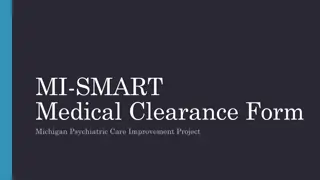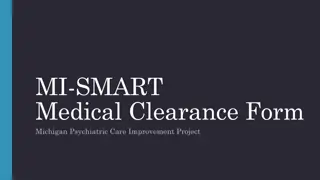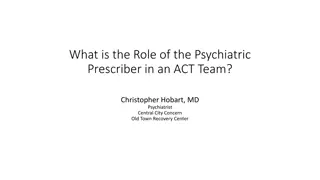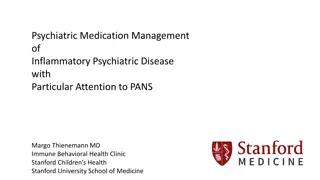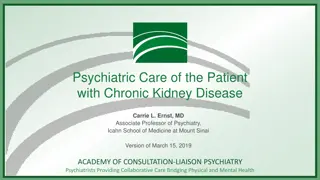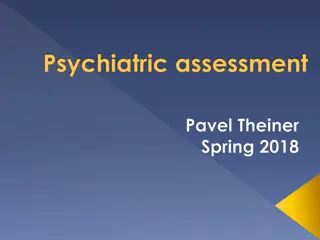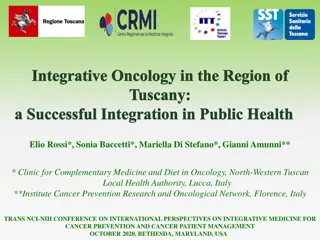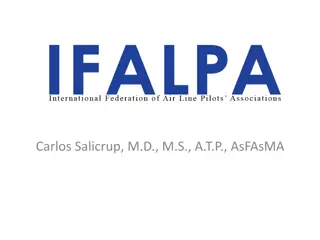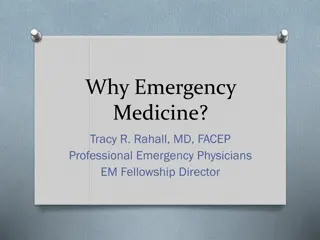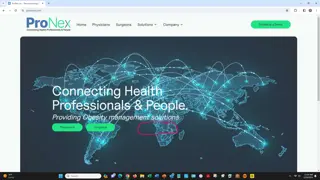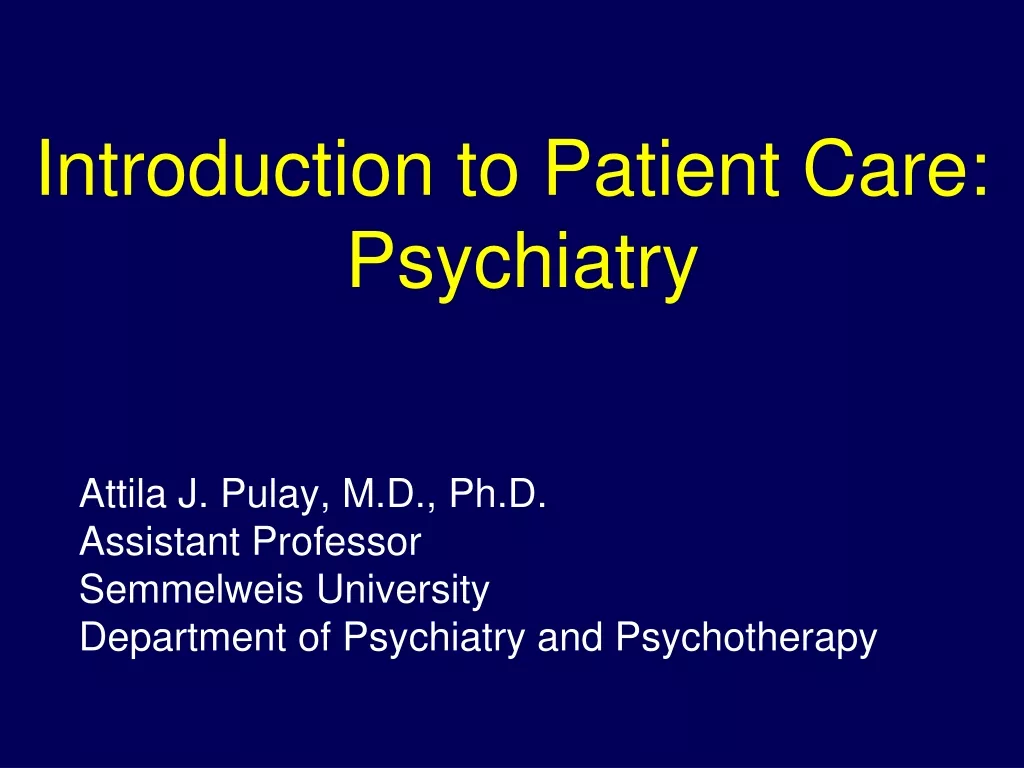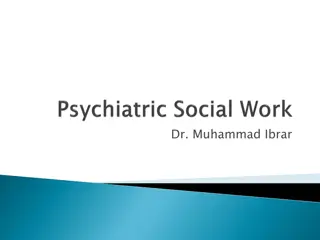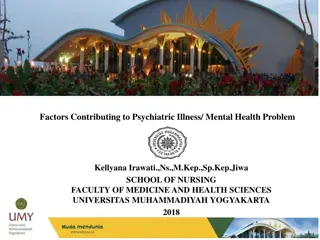The Role of Psilocybin in Modern Psychiatric Medicine
The use of psilocybin, a compound found in psychedelic mushrooms, in modern psychiatric medicine. It covers its traditional use, global distribution, early studies, and current areas of research in depression, tobacco cessation, terminal illness, and more.
- psilocybin
- psychiatric medicine
- psychedelic mushrooms
- global distribution
- traditional use
- early studies
- areas of research
- depression
Download Presentation

Please find below an Image/Link to download the presentation.
The content on the website is provided AS IS for your information and personal use only. It may not be sold, licensed, or shared on other websites without obtaining consent from the author. Download presentation by click this link. If you encounter any issues during the download, it is possible that the publisher has removed the file from their server.
E N D
Presentation Transcript
The Role of Psilocybin in Modern Psychiatric Medicine Adam Clark, PA-S University of St. Francis
What is Psilocybin? Psilocybe genusmushrooms Norbaeocystin1,2 Psilocin, Baeocystin, and 5HT2A serotonin receptors
Global Distribution P. cyanescens P. cubensis Guzman G, Allen J, Gartz J. A worldwide geographical distribution of the neurotropic fungi, an analysis and discussion. Ann Mus Civ Rovereto. 1998;14:189-280
Traditional Use and the West Thousands of years of indigenous use7,8 Banning by colonization8,10 Spanish colonization of Mexico began in 1521. Introduction to the West9 Robert Gordon Wasson, 1955 Artwork courtesy of Girish Chandok @girishchandok on IG
Early Studies and Banning Early studies10 Spilling into the public10 DEA and the Controlled Substance Act (1970)11
A Comeback Heffter Research Institute FDA Breakthrough Therapy Nikean Psychedelic Psychotherapy Research Centre John s Hopkins Center for Psychedelic and Consciousness Research Multidisciplinary Association for Psychedelic Studies (MAPS) Mass General Center for the Neuroscience of Psychedelics
Areas of Research Depression12-17 Tobacco Cessation21,22 Suicidal ideation17 Alcohol Use Disorder23,24 Terminal illness18-20 OCD, Anxiety, PTSD Concussion Anorexia Lyme Disease Alzheimer s Disease
Contraindications Hypertension Possibly more that we have not yet discovered. Psychosis/Psychotic Disorders Interactions with medications?
Griffiths RR, Johnson MW, Carducci MA, et al. Psilocybin produces substantial and sustained decreases in depression and anxiety in patients with life- threatening cancer: A randomized double-blind trial. J Psychopharmacol (Oxf). 2016;30(12):1181-1197. doi:10.1177/0269881116675513
Griffiths RR, Johnson MW, Carducci MA, et al. Psilocybin produces substantial and sustained decreases in depression and anxiety in patients with life-threatening cancer: A randomized double-blind trial. J Psychopharmacol (Oxf). 2016;30(12):1181-1197. doi:10.1177/0269881116675513
Griffiths RR, Johnson MW, Carducci MA, et al. Psilocybin produces substantial and sustained decreases in depression and anxiety in patients with life-threatening cancer: A randomized double-blind trial. J Psychopharmacol (Oxf). 2016;30(12):1181-1197. doi:10.1177/0269881116675513
Bogenschutz MP, Forcehimes AA, Pommy JA, Wilcox CE, Barbosa P, Strassman RJ. Psilocybin-assisted treatment for alcohol dependence: A proof-of- concept study. J Psychopharmacol (Oxf). 2015;29(3):289-299. doi:10.1177/0269881114565144
Limitations Small sample size Not generalizable Lack of control group Limited blinding
Conclusions Safety: Safe Efficacy: Effective
Conclusion DEA Schedule I Criteria: The drug or other substance has a high potential for abuse. The drug or other substance has no currently accepted medical use in treatment in the United States. There is a lack of accepted safety for use of the drug or other substance under medical supervision.
Nutt DJ, King LA, Phillips LD. Drug harms in the UK: a multicriteria decision analysis. The Lancet. 2010;376(9752):1558-1565. doi:10.1016/S0140-6736(10)61462-6
References 1. doi:10.3181/00379727-106-26228 Horita A, Weber LJ. Dephosphorylation of Psilocybin to Psilocin by Alkaline Phosphatase. Exp Biol Med. 1961;106(1):32-34. 2. doi:10.1002/jps.2600571007 Leung AY, Paul AG. Baeocystin and Norbaeocystin: New Analogs of Psilocybin from Psilocybe baeocystis. J Pharm Sci. 1968;57(10):1667-1671. 3. 1998;14:189-280. Guzman G, Allen J, Gartz J. A worldwide geographical distribution of the neurotropic fungi, an analysis and discussion. Ann Mus Civ Rovereto. 4. week/archive/p/psilocybin.html#:~:text=In%201958%2C%20Swiss%20chemist%20Albert,%E2%80%9Cfather%20of%20LSD%E2%80%9D.) Molecule of the Week Archive: Psilocybin. Published October 2, 2018. https://www.acs.org/content/acs/en/molecule-of-the- 5. Nichols DE. Psychedelics. Barker EL, ed. Pharmacol Rev. 2016;68(2):264-355. doi:10.1124/pr.115.011478 6. Norbaeocystin, Baeocystin, Norpsilocin, and Aeruginascin. J Nat Prod. 2020;83(2):461-467. doi:10.1021/acs.jnatprod.9b01061 Sherwood AM, Halberstadt AL, Klein AK, et al. Synthesis and Biological Evaluation of Tryptamines Found in Hallucinogenic Mushrooms: 7. Carod-Artal FJ. Alucin genos en las culturas precolombinas mesoamericanas. Neurolog a. 2015;30(1):42-49. doi:10.1016/j.nrl.2011.07.003 8. Letcher A. Feasts and Revelations. In: Shroom: A Cultural History of the Magic Mushroom. Reprint. Ecco; 2008:74-77. 9. Gordon Wasson R. Seeking the Magic Mushroom. LIFE Mag. 1957;42(19):100-110, 113-114, 117-118, 120. 10. and Transcendence. Penguin Press; 2018. Pollan M. In: How to Change Your Mind: What the New Science of Psychedelics Teaches Us About Consciousness, Dying, Addiction, Depression, 11. Controlled Substance Act. https://www.law.cornell.edu/uscode/text/21/812 12. 2017;7(1):13187. doi:10.1038/s41598-017-13282-7 Carhart-Harris RL, Roseman L, Bolstridge M, et al. Psilocybin for treatment-resistant depression: fMRI-measured brain mechanisms. Sci Rep. 13. doi:10.1056/NEJMoa2032994 Carhart-Harris R, Giribaldi B, Watts R, et al. Trial of Psilocybin versus Escitalopram for Depression. N Engl J Med. 2021;384(15):1402-1411.
References study. Lancet Psychiatry. 2016;3(7):619-627. doi:10.1016/S2215-0366(16)30065-7 15. Gukasyan N, Davis AK, Barrett FS, et al. Efficacy and safety of psilocybin-assisted treatment for major depressive disorder: Prospective 12-month follow-up. J Psychopharmacol (Oxf). 2022;36(2):151-158. doi:10.1177/02698811211073759 16. Davis AK, Barrett FS, May DG, et al. Effects of Psilocybin-Assisted Therapy on Major Depressive Disorder: A Randomized Clinical Trial. JAMA Psychiatry. 2021;78(5):481. doi:10.1001/jamapsychiatry.2020.3285 17. Zeifman RJ, Yu D, Singhal N, Wang G, Nayak SM, Weissman CR. Decreases in Suicidality Following Psychedelic Therapy: A Meta-Analysis of Individual Patient Data Across Clinical Trials. J Clin Psychiatry. 2022;83(2). doi:10.4088/JCP.21r14057 18. Ross S, Bossis A, Guss J, et al. Rapid and sustained symptom reduction following psilocybin treatment for anxiety and depression in patients with life-threatening cancer: a randomized controlled trial. J Psychopharmacol (Oxf). 2016;30(12):1165-1180. doi:10.1177/0269881116675512 19. Agin-Liebes GI, Malone T, Yalch MM, et al. Long-term follow-up of psilocybin-assisted psychotherapy for psychiatric and existential distress in patients with life-threatening cancer. J Psychopharmacol (Oxf). 2020;34(2):155-166. doi:10.1177/0269881119897615 20. Griffiths RR, Johnson MW, Carducci MA, et al. Psilocybin produces substantial and sustained decreases in depression and anxiety in patients with life-threatening cancer: A randomized double-blind trial. J Psychopharmacol (Oxf). 2016;30(12):1181-1197. doi:10.1177/0269881116675513 21. Johnson MW, Garcia-Romeu A, Cosimano MP, Griffiths RR. Pilot study of the 5-HT 2AR agonist psilocybin in the treatment of tobacco addiction. J Psychopharmacol (Oxf). 2014;28(11):983-992. doi:10.1177/0269881114548296 22. Johnson MW, Garcia-Romeu A, Griffiths RR. Long-term follow-up of psilocybin-facilitated smoking cessation. Am J Drug Alcohol Abuse. 2017;43(1):55-60. doi:10.3109/00952990.2016.1170135 23. Bogenschutz MP, Forcehimes AA, Pommy JA, Wilcox CE, Barbosa P, Strassman RJ. Psilocybin-assisted treatment for alcohol dependence: A proof-of- concept study. J Psychopharmacol (Oxf). 2015;29(3):289-299. doi:10.1177/0269881114565144 24. Bogenschutz MP, Podrebarac SK, Duane JH, et al. Clinical Interpretations of Patient Experience in a Trial of Psilocybin-Assisted Psychotherapy for Alcohol Use Disorder. Front Pharmacol. 2018;9:100. doi:10.3389/fphar.2018.00100 25. Johnson MW, Griffiths RR, Hendricks PS, Henningfield JE. The abuse potential of medical psilocybin according to the 8 factors of the Controlled Substances Act. Neuropharmacology. 2018;142:143-166. doi:10.1016/j.neuropharm.2018.05.012 26. Nutt D, Carhart-Harris R. The Current Status of Psychedelics in Psychiatry. JAMA Psychiatry. 2021;78(2):121. doi:10.1001/jamapsychiatry.2020.2171 14. Carhart-Harris RL, Bolstridge M, Rucker J, et al. Psilocybin with psychological support for treatment-resistant depression: an open-label feasibility
How Does it Work? Default Mode Network Functional Connectivity Placebo
Healthy Volunteers In this paper we show a relation between the intensity of the psilocybin-induced mystical-type experience and lasting positive psychological effects and extend previous work by showing that the MEQ subscales Mysticality and Positive Mood were more closely associated with lasting positive effects than Transcendence of Time and Space or Ineffability. This suggests that the phenomenology of the psychedelic experience is relevant to lasting positive effects. Additionally, we provide the first extensive qualitative descriptions of orally administered psilocybin in healthy volunteers revealing themes including universal connectedness, experience of beauty, and familial love that may be used to inform future research utilising psilocybin in healthy volunteers.
Microdosing While small amounts of dried Psilocybe cubensis mushrooms reliably induced significant subjective effects, their impact in other domains was negligible or even indicative of impaired performance. Clearly, more research is needed to decide whether microdosing with psychedelics can deliver at least some of its promised positive effects. Psilocybin microdosers demonstrate greater observed improvements in mood and mental health at one month relative to non-microdosing controls Joseph M. Rootman, Maggie Kiraga, Pamela Kryskow, Kalin Harvey, Paul Stamets, Eesmyal Santos-Brault, Kim P. C. Kuypers & Zach Walsh [The authors]identified small- to medium-sized improvements in mood and mental health that were generally consistent across gender, age and presence of mental health concerns, as we all as improvements in psychomotor performance that were specific to older adults Psilocybin microdosing does not affect emotion-related symptoms and processing: A preregistered field and lab-based study Josephine Marschall, George Fejer, Pascal Lempe, Luisa Prochazkova, Martin Kuchar, Katerina Hajkova and Michiel van Elk Our confirmatory analyses revealed that psilocybin microdosing did not affect emotion processing or symptoms of anxiety and depression compared with placebo.
Negative Effects 2020 2011 In conclusion, the use of magic mushrooms is relatively safe as only few and relatively mild adverse effects have been reported. The low prevalent but unpredictable provocation of panic attacks and flash-backs remain, however, a point of concern. The results confirm psilocybin mushrooms are a relatively safe drug, with serious incidents rare and short lasting. Providing harm-reduction information likely plays a key role in preventing adverse effects. More research is needed to examine the detailed circumstances and predictors of adverse reactions including rarer physiological reactions.



